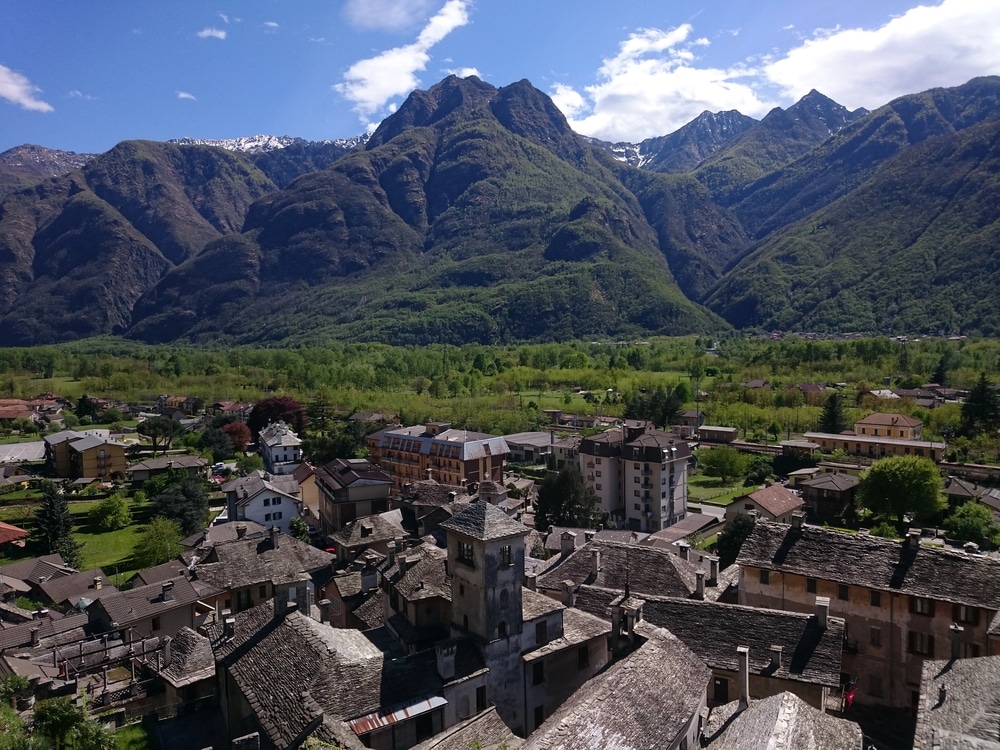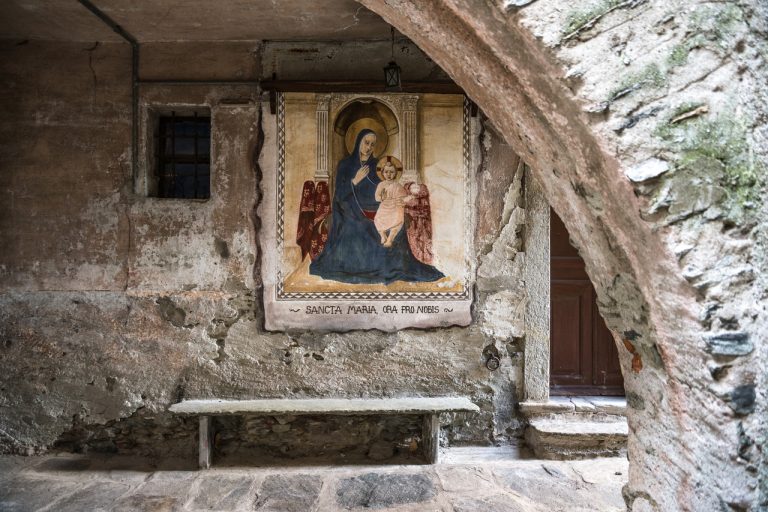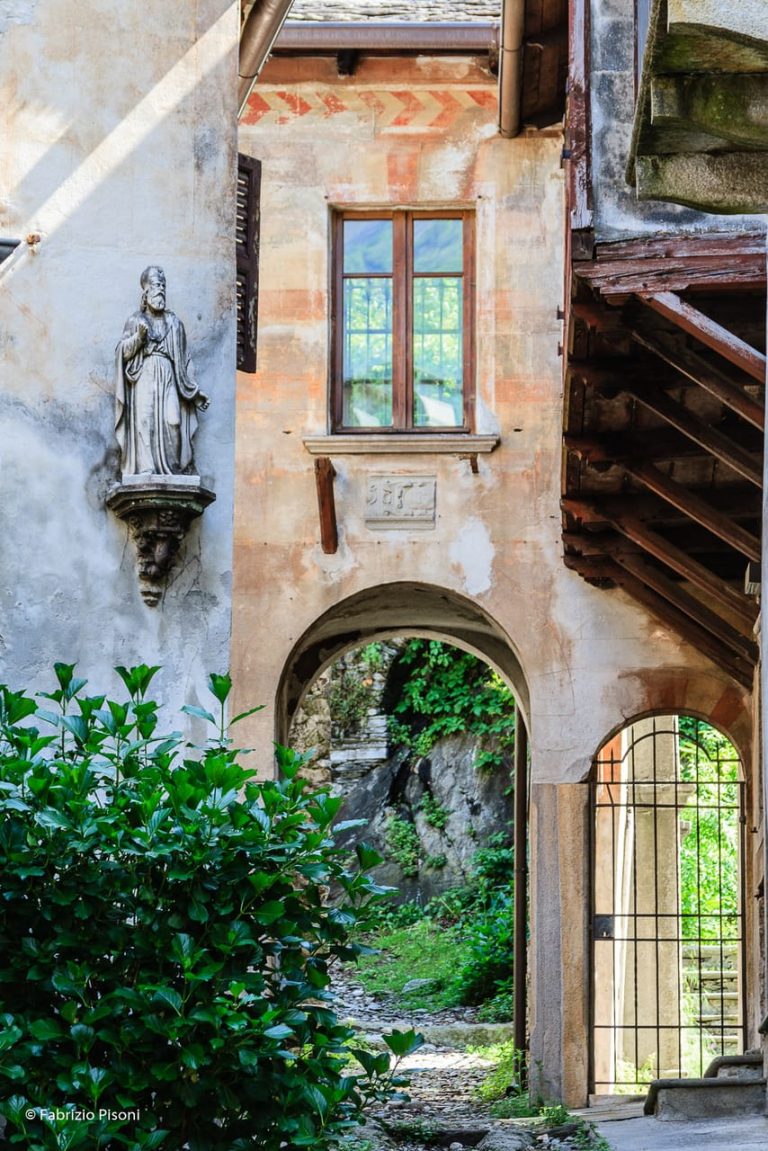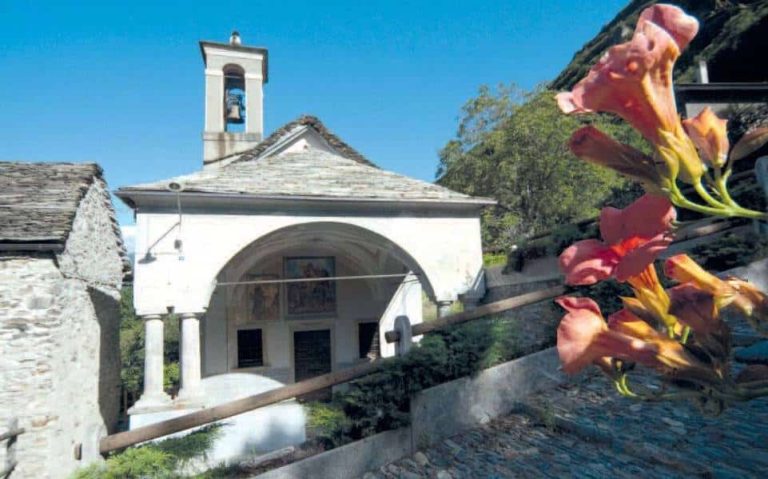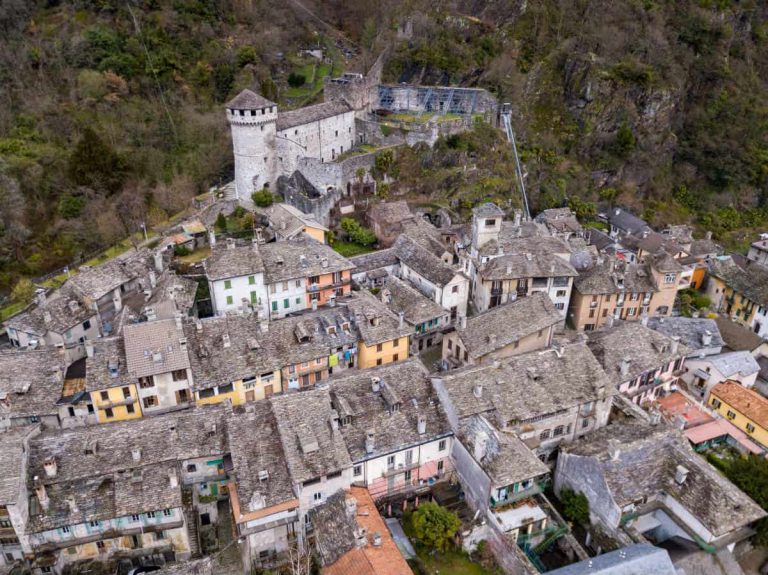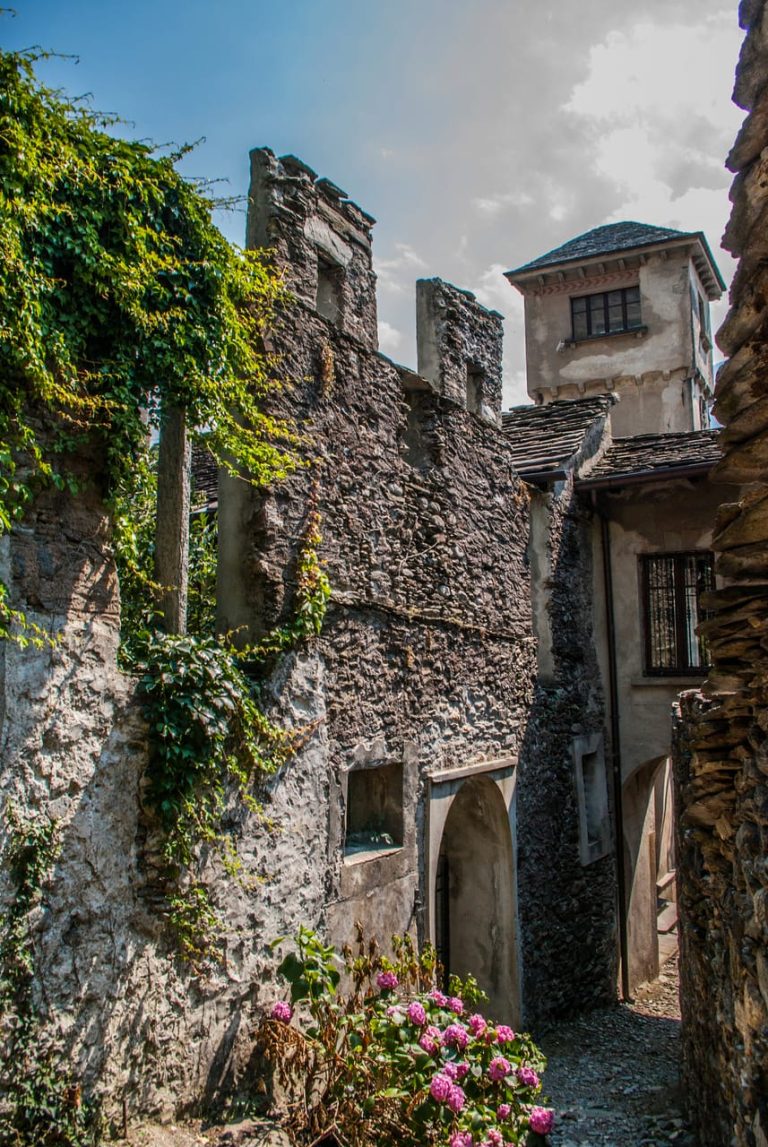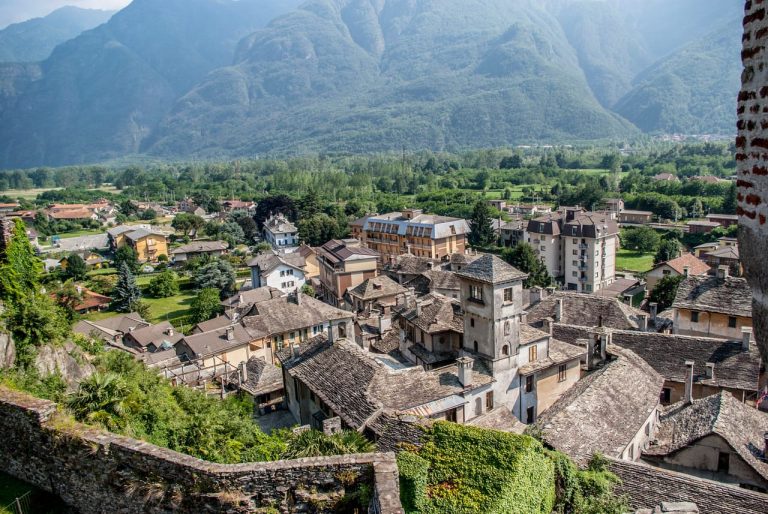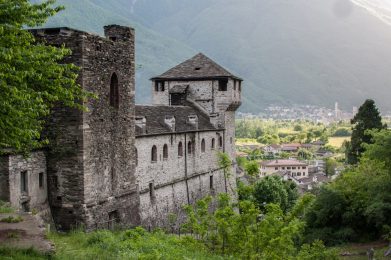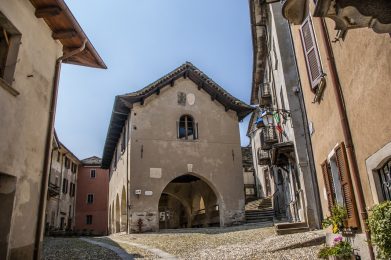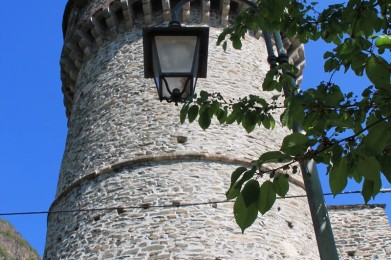Vogogna, overlooking the heart of the Ossola Valley in Piedmont, is a village that bears imprinted in its stones the stratification of centuries of history and culture. The etymology of its name seems to derive from Vallis Agonum, the valley of the Agons, an ancient Gallic people who inhabited these lands before the arrival of the Romans. A tombstone dated 196 A.D. testifies to the Roman presence, while the first official mention of the village appears in a notarial document dated 970. For centuries it remained a rural village until, in the 13th century, its strategic location made it the capital of Ossola Inferiore, as opposed to Domodossola, which ruled Ossola Superiore. The rivalry between the two centers marked the life of the village, which in 1375 was sacked by the Domesi, but was also able to rise again, so much so that it became, under the Visconti and Borromeo families, an important administrative and commercial center along the ancient Simplon road.
The most imposing symbol of this past is the Castello Visconteo, built in 1348 at the behest of Giovanni Visconti, bishop and lord of Milan. Its irregular plan follows the orography of the terrain, and its towers still tell of its role as a defensive bulwark and noble residence. Slightly higher up, the ruins of the medieval Rocca watch over the village: built perhaps in Roman or early medieval times, it was a strategic garrison in the valley's defensive system and still remains an extraordinarily impressive vantage point.
Descending into the heart of the historic center is the Palazzo Pretorio, also dating from 1348, with its pointed Gothic arches and squat columns reminiscent of the Lombard broletti model. Seat of the government of Ossola Inferiore until 1819, it houses inside the famous Celtic Mascherone, carved in soapstone and depicting a male figure linked to the worship of sylvan deities, a probable legacy of ancient pre-Roman populations.
Strolling through the cobblestone streets of the village, where the stone houses huddle close to each other and the beola roofs reflect the gray of the mountains, one discovers historic residences and stately palaces. Prominent among them are Villa Biraghi Lossetti, now the headquarters of the Val Grande National Park, and Casa Marchesa, probably carved out of a reinforcement of the town wall. The streets and alleys reveal picturesque views, secluded little squares and evidence of ancient frescoes, coats of arms and decorations that tell of the continuity of village life. Just outside the center is the Oratory of St. Peter, possibly of Lombard origin, which preserves valuable 15th-century frescoes and, in the courtyard, a copy of the Celtic mask from which spring water flows.
Vogogna is also unspoiled nature: home to the Val Grande National Park, the largest wilderness area in Italy, it is a privileged gateway for excursions ranging from historical trails such as "The Breath of History" to geological paths that tell the story of the formation of the Alps. The village is part of "Italy's Most Beautiful Villages" and holds the Touring Club's Orange Flag, awards that underscore its cultural and tourism value.
Visiting Vogogna means immersing oneself in a living Middle Ages, where the charm of the architecture, the call of Celtic legends and the grandeur of the fortifications blend with the quietness of the alleys, the romantic atmospheres and the wild strength of the surrounding nature. It is a place capable of combining history, art and landscape, offering the visitor a slow, authentic and unforgettable experience.

